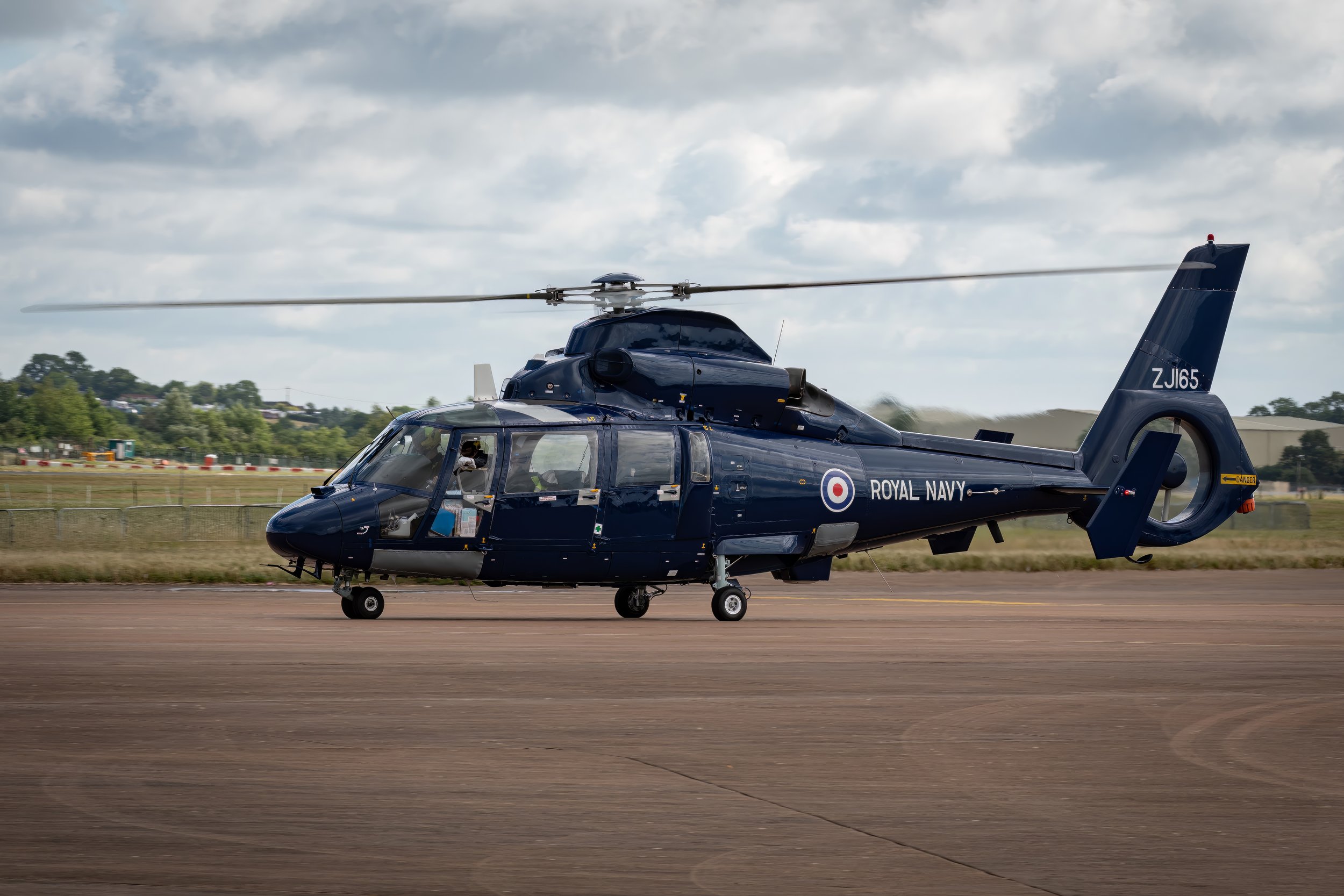
January 24 / AS365 Dauphin first flight
First Flight 24 January 1975
Eurocopter AS365 Dauphin
The AS365 Dauphin, originally known as the Aérospatiale SA 365 Dauphin 2, has a rich history that stretches back to the mid-1970s when it first took to the skies. The helicopter is a product of Aérospatiale, a French aerospace manufacturer that played a pivotal role in the development of a variety of aircraft, including helicopters. The Dauphin was conceived as a response to the market’s demand for a versatile, twin-engine rotorcraft that could serve both civil and military applications effectively.
The journey of the Dauphin began with the less successful Aérospatiale SA 360, a single-engine helicopter that failed to capture the market’s interest. Recognizing the limitations of a single-engine design, Aérospatiale initiated a redesign program that would lead to the development of a twin-engine variant. This decision was pivotal, as twin-engine helicopters are generally considered safer and more reliable, particularly for operations in challenging environments. The first flight of the prototype took place on January 24, 1975, and it quickly proved its capabilities by achieving impressive airspeeds and setting several records, including a remarkable Paris-London trip.
The initial production model, designated SA 365C, received French certification in July 1978, with subsequent approvals from the US Federal Aviation Administration (FAA) and the British Civil Aviation Authority (CAA) later that year. By December 1978, deliveries to customers began, marking the official entry of the Dauphin into the commercial helicopter market. The aircraft’s design featured a spacious cabin, advanced avionics, and the innovative Fenestron anti-torque tail rotor, which contributed to its low noise and vibration levels.
As the years progressed, the Dauphin underwent several enhancements. In 1982, the SA 365 N model was introduced, boasting more powerful engines and a host of improvements, including the use of composite materials and a refined cabin layout. The introduction of the SA 365 N1 and N2 variants brought further advancements, particularly in terms of performance and capability, with the latter featuring even more powerful Turbomeca Arriel engines. By 1990, the helicopter was officially redesignated as the AS365, solidifying its identity within the Eurocopter lineup.
The versatility of the AS365 Dauphin has led to its adaptation for a wide range of roles beyond standard passenger transport. Throughout the 1980s, the military-oriented Eurocopter Panther emerged from the Dauphin platform, designed for utility, troop transport, and maritime operations. In the United States, the HH/MH-65 Dolphin variant was developed specifically for the Coast Guard, showcasing the helicopter’s adaptability for search and rescue missions and law enforcement operations. Additionally, the Chinese Harbin Aircraft Manufacturing Corporation produced the Z-9 based on the SA 365 M model, which later evolved into armed variants like the WZ-9 and Z-19.
The design of the AS365 Dauphin is notable for its efficiency and capability to operate in various environmental conditions. Equipped with twin Turbomeca Arriel turboshaft engines, the helicopter is adept at long-range travel and can perform effectively in high-temperature and high-altitude scenarios. The incorporation of Full Authority Digital Engine Control (FADEC) units in later variants enhances operational efficiency and reduces pilot workload during critical phases of flight.
The Dauphin’s airframe is characterized by its composite materials, which not only reduce weight but also improve durability and reduce maintenance needs. The cabin can be easily reconfigured for different missions, accommodating up to 12 passengers in a standard layout or seven in a VIP configuration. The cockpit is designed for dual-pilot operations but can also be flown solo, thanks to advanced avionics that include a 4-axis Digital Automatic Flight Control System, making it suitable for various operational scenarios.
The AS365’s design also emphasizes safety and reliability, featuring dual hydraulic systems, redundant electrical systems, and a robust fuselage that can accommodate additional equipment such as hoists and cargo slings. The helicopter’s low noise profile, achieved through its innovative rotor system, has made it a popular choice among operators who prioritize quiet operations, particularly in urban environments.
Throughout its production life, the AS365 Dauphin has established itself as a reliable workhorse in both civil and military aviation. Its adaptability and proven performance have led to numerous specialized variants, each tailored to meet the specific needs of operators across the globe. As the aviation landscape continues to evolve, the Dauphin remains a prominent figure, with its legacy paving the way for the next generation of helicopters, such as the Airbus Helicopters H160, which aims to carry forward the spirit of innovation and versatility that the Dauphin has exemplified for decades.
AS365 Dauphin Facts
Origins: The AS365 Dauphin was developed from the Aérospatiale SA 360, a single-engine helicopter that was commercially unsuccessful. The twin-engine design was introduced to better meet market demands.
First Flight: The prototype of the AS365 Dauphin made its first flight on January 24, 1975. It quickly demonstrated impressive performance, including a top speed of 170 knots.
Certification: The initial production variant, designated SA 365C, received French certification in July 1978, followed by approvals from the US FAA and British CAA later that year. Customer deliveries began in December 1978.
Design Features: The Dauphin is notable for its Fenestron anti-torque tail rotor, which reduces noise and vibration, making it one of the quietest helicopters in its class.
Multiple Variants: Over the years, the Dauphin has been adapted into several specialized variants, including the military-oriented Eurocopter Panther, the HH/MH-65 Dolphin for the U.S. Coast Guard, and the Chinese-manufactured Harbin Z-9.
Longevity: The AS365 has been in continuous production since 1975, making it one of the longest-serving helicopter designs in the world, with over 1,200 units produced.
Powerplant: The Dauphin is typically powered by a pair of Turbomeca Arriel turboshaft engines, which provide reliability and performance in a variety of operational environments.
Cabin Versatility: The helicopter’s cabin is designed to be reconfigurable, accommodating up to 12 passengers in a standard layout or seven in a VIP configuration, making it suitable for various missions including EMS and SAR.
Advanced Avionics: The cockpit features advanced avionics, including multi-mission touch screen displays, GPS, and a 4-axis Digital Automatic Flight Control System, allowing for single-pilot operation under instrument flight rules.
Modern Successor: The AS365 Dauphin is intended to be succeeded by the Airbus Helicopters H160, which entered operational service in 2021, representing the next generation of multipurpose helicopters.

